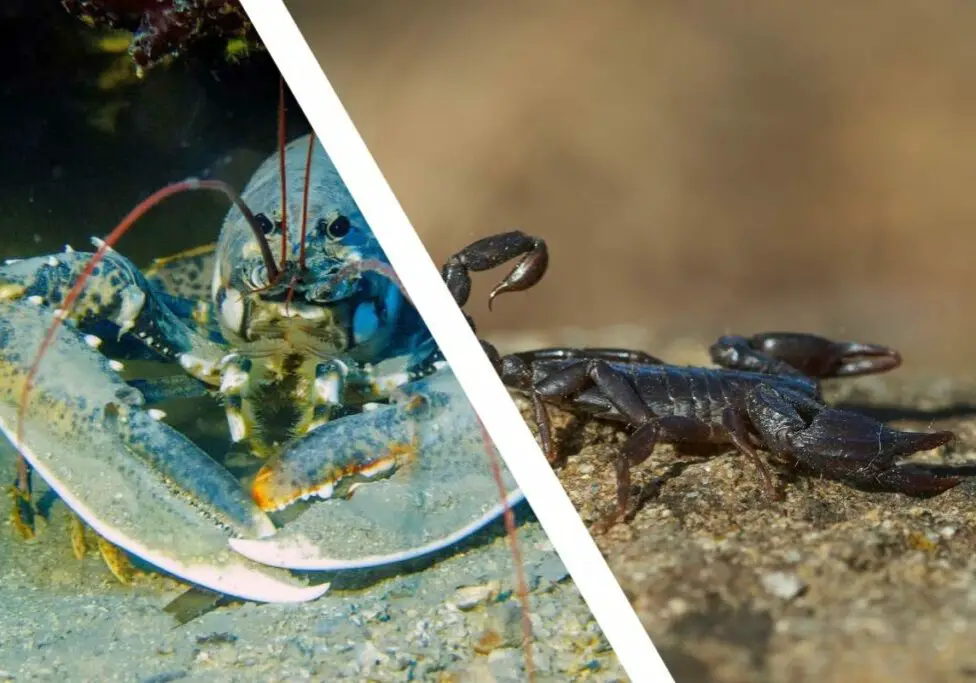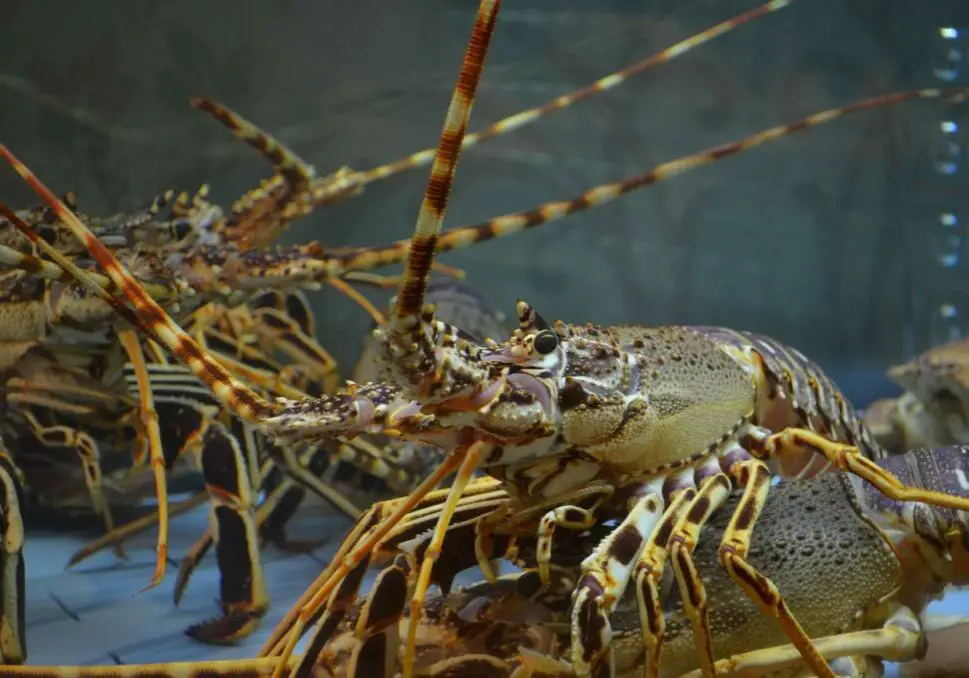How Is A Sand Dollar Made?
Sand dollars are very interesting, non-harmful marine creatures and are very often found on tropical beaches as beautiful white “shells” with a flower-like pattern on them. I found one myself two years ago on the coast of Panama and just like you wondered how they are made. Apparently, they look nothing like this before they actually die, and in this post, we’ll talk all about that. However, let’s start with a quick answer:
White sand dollars you find on the beach are usually dead remains of living sand dollars. When sand dollars die, they lose their spines and their purple color. In most cases, the strong currents and tides wash sand dollars ashore after which they die and get bleached by the sun.
However, that certainly doesn’t tell the whole story. Below I’ll explain more about what sand dollars actually are, how they end up on the beach, and what the life of living sand dollars looks like. Furthermore, I’ll explain how sand dollars reproduce: sexually and asexually. Read on!
What Are Sand Dollars
Sand dollars are one of the most fascinating living marine creatures. They belong to a group called Echinoderms, known for their spiny skin and radial symmetry. Other animals that represent the same group are sea stars, sea urchins, brittle stars, feather stars, and sea cucumbers. Anatomically, sand dollars are much like a flattened sea urchin with smaller, hair-like spines.
How Do Sand Dollar End Up On The Beach?
Sand dollars’ shells that are usually found on the beach are actually remains of living organisms. What’s interesting, living and dead sand dollars differ in many ways and you can easily identify whether a sand dollar you found is dead or alive. I actually wrote another blog post explaining how to tell the difference between dead and alive sand dollar. If you’d like to read more about that, see my other blog post here.
Most of the sand dollars live for 8-10 years which is quite remarkable for a marine creature without strong defending availabilities. They are able to survive long thanks to their dark shade color that helps them to camouflage on the sandy bottom of the ocean. They’re known for burrowing in the sand completely as it’s much easier than actually defending themselves or escaping. Their predators however are mostly seagulls, fish, crabs, sea stars, and octopuses.
However, the biggest challenge for sand dollars are strong currents and tides as they often live on sandy or muddy seafloor in shallow waters near land. This is why you might find them often washed up on the beach.
Even though sand dollars have large holes in their tests that help them to stay grounded, the strong tides and currents often bring them close to the beach, leaving them on sunny shores. When they reach the beach, they can’t live without the water for long and they are being dried out by the sun. The silvery look they get makes them look like old silver dollars, which is how they got their name.
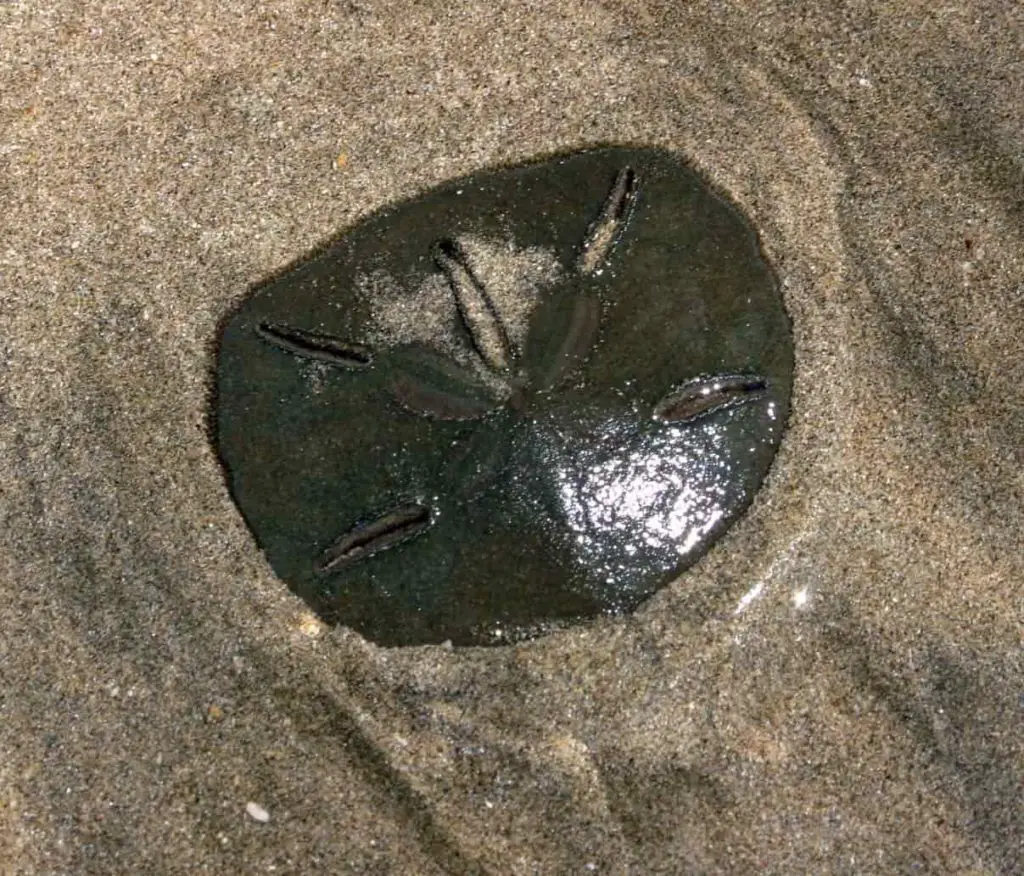
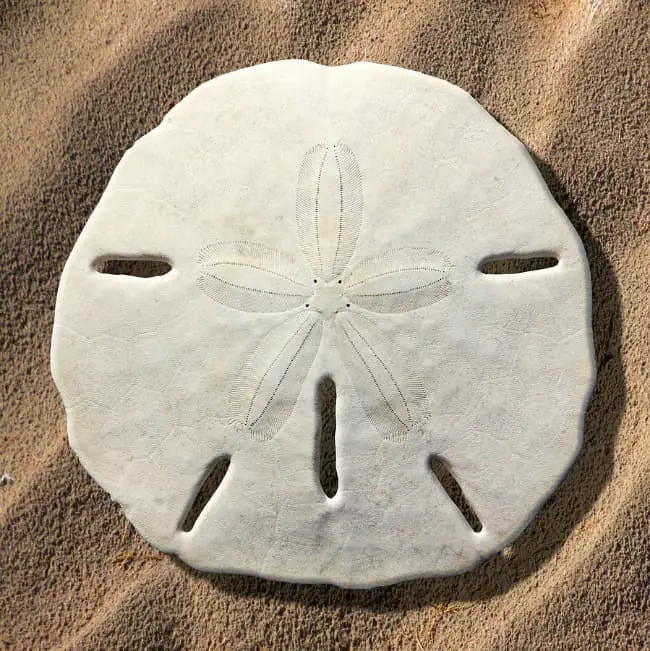
What happens to sand dollars when they die is that their spines start falling off leaving only their skeletons (called tests). Next, when they’re washed up to the shore, the sun bleaches their color turning it into silver-white. This is how the sand dollar is made that you usually find on the beach.
What Does The Life Of A Sand Dollar Look Like?
When sand dollars are alive their color ranges from dark brown to purplish-red so they can stay camouflaged on the seafloor. The color may differ depending on the species since there are more than 200 of them. There were even some rare species spotted on the coast of Australia and Indonesia with a bright pink color (Peronella Lesueuri).
Living sand dollars are covered in tiny spines all over their body that help them to move around and bury themselves in the sand. They use their sticky tube feet to move food to the mouth opening that is located in the center of the flower-like shape pattern on the bottom of its body.

They mostly eat detritus, planktons, crustacean larvae, and debris from the seafloor, but they also use the tiny teeth they have inside to scrape away and chew algae. Another interesting characteristic of living sand dollars is the harmless yellow substance they produce, called echinochrome.
If you hold the sand dollar in the palm of your hand and leave it for a minute, it’ll most likely leave a yellowish stain. However, be aware that sand dollars can’t live without water for longer than a few minutes so make sure you don’t hold it for too long.
How Do Sand Dollars Reproduce
Sexual Reproduction
Sand dollars reproduce through a behavior called broadcast spawning. This is a common form of sexual reproduction used by many marine invertebrates. During this process, several females release their eggs and several males release their sperm into the water column, all at the same time. With this method, billions of gametes (sperm and egg combination) are spewed into the water, increasing the likelihood that eggs will be successfully fertilized and won’t be eaten immediately by predators on the bottom of the ocean.
Once eggs are fertilized, they develop into larvae and settle, generally, on the seafloor. Sand dollars are very social animals that live in large groups which makes the broadcast spawning the most successful way of reproduction. It’s usually a seasonal or annual event but factors which cause spawning are complex and can depend on water temperature, light, or phase of the moon.
Asexual Reproduction – Cloning
What’s fascinating about the Enchinoderms is that they are able to clone – yes, you’ve heard it right. This remarkable skill is based on the mutable properties of their connective tissue. In the sand dollar case – only the larvae can reproduce this way. Basically, this is their strategy to avoid being eaten alive. A few years ago biologists discovered that a sand dollar larvae can clone itself in response to the presence of the fish mucous – a signal of predators. This way they are a less obvious target as the copied larva is about half the size of the original one.
You may also like:
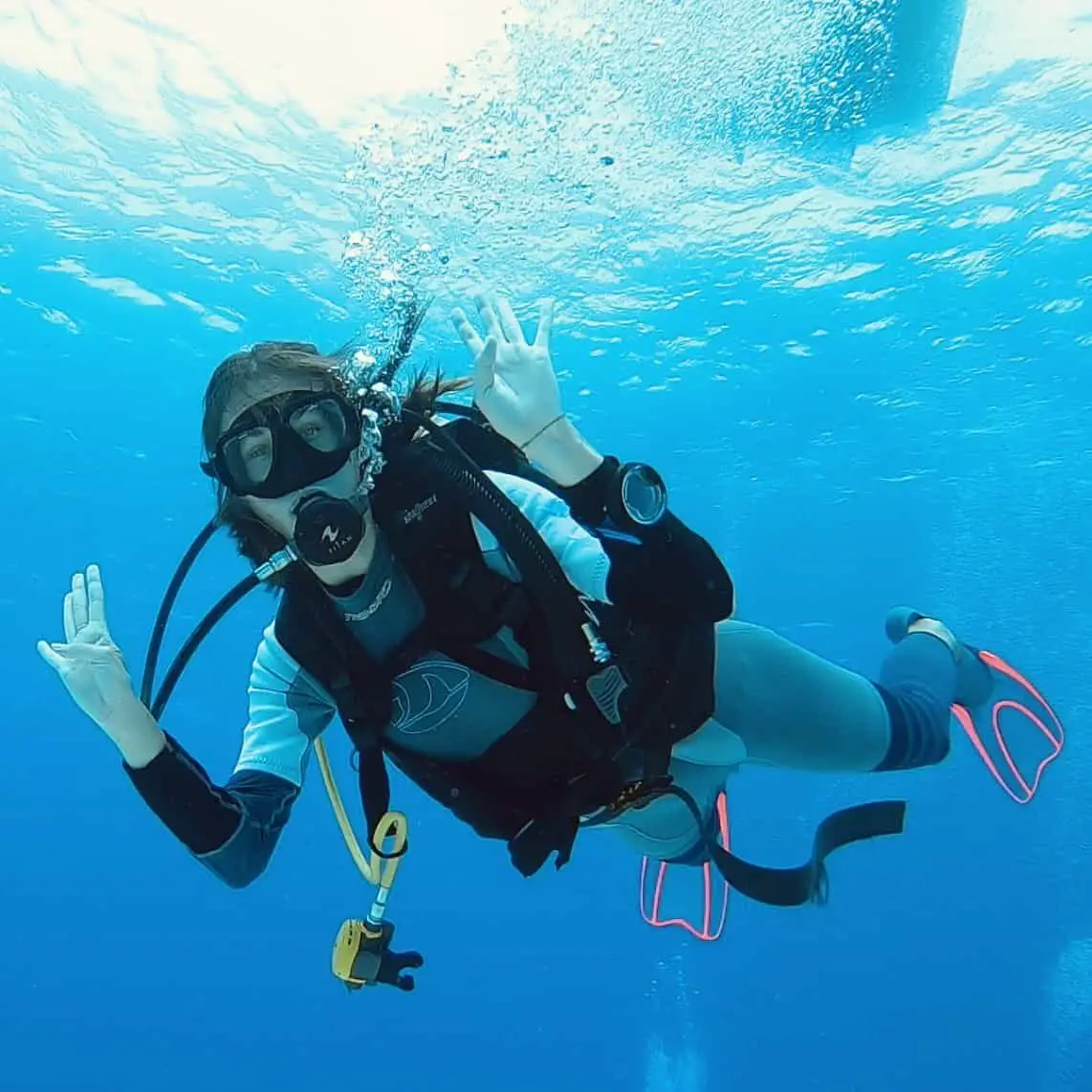
Welcome to Bubbly Diver!
I’m glad to see you here. This blog is created for all marine creature lovers by a bubbly diver - me, Dori :)

